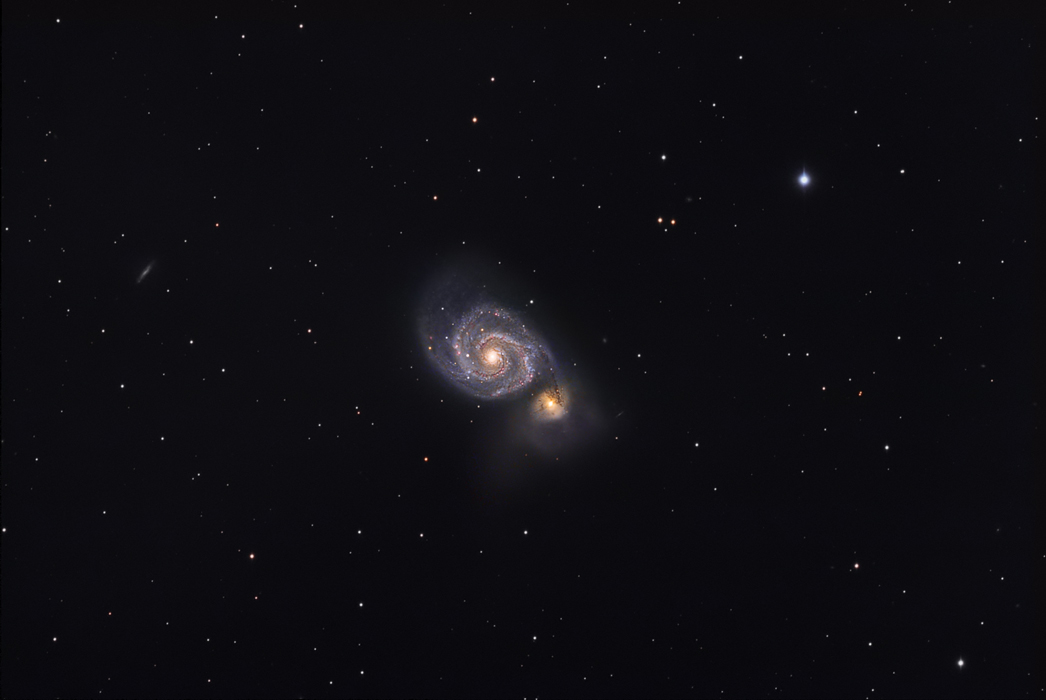Time Travel Research Center © 2005 Cetin BAL - GSM: + 90 05366063183 - Turkey / Denizli
M51 (Whirlpool Galaxy) and NGC 5195


|
Characteristics: Magnitude: 8.4 Size: about 11' x 7' Distance: 37 million light years RA: 13h 30m 5.9s Dec: 47 degrees 10' 04" Description: The famous face-on spiral galaxy M51 (NGC 5194) is located in the constellation Canes Venatici (Hunting Dogs). It was originally discovered by Charles Messier in 1773, although its true spiral structure was first realized by Lord Rosse in 1845. The galaxy has a characteristic shape, in the form of an inverted question mark, due to its association with another galaxy located well behind M51 in the above photograph, known as NGC 5195. Note that this smaller galaxy is seen edge on and is partly obscured by a long, thin, prominent dust lane extending from M51. Interaction between M51 and NGC5195 is thought to trigger new star formation in M51 itself, as represented by clusters of young, blue stars within the spiral arms. M51 is a good target for visual observation through small aperture telescopes in dark skies, although it can be a challenging to discern its spiral structure in more light polluted skies. Closer examination of this image reveals several other small galaxies, including IC4263, IC4277, and IC4278. More information about M51 may be found here. Photographic Details: Date: March 18, 2006 and April 15, 2006. Scope: Takahashi FS-102 at f8 , on the G11 Losmandy Mount. Autoguider: SBIG STV with e-finder. Camera: CM10 Filter: Astronomik Type II R, G, B, plus clear filter set; IDAS LPS. Exposures: L:R:G:B. 18 x 10' subexposures for total 3 hours of luminance, unbinned; 45' each for R, G, and B, unbinned. Total exposure duration 5.25 hours. Conditions: Temperature 50 degrees F; average transparency; average seeing; a few passing clouds. Post-processing: Debloomed with Ron Wodaski's Debloomer software, calibrated and aligned in Maxim, combined using RC Sigma Reject MaximDL, followed by DDP in ImagesPlus (IP). Levels, curves, high-pass sharpening in Photoshop CS (16 bit format). |